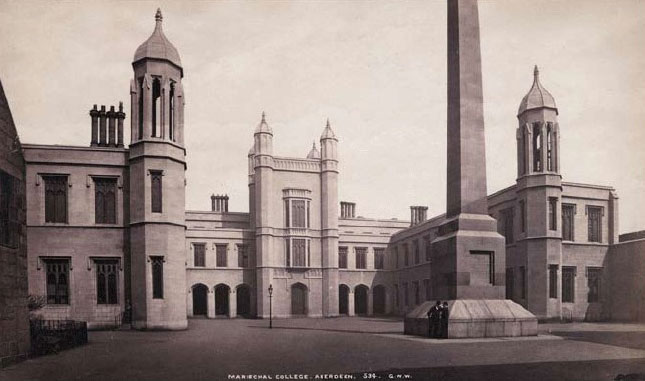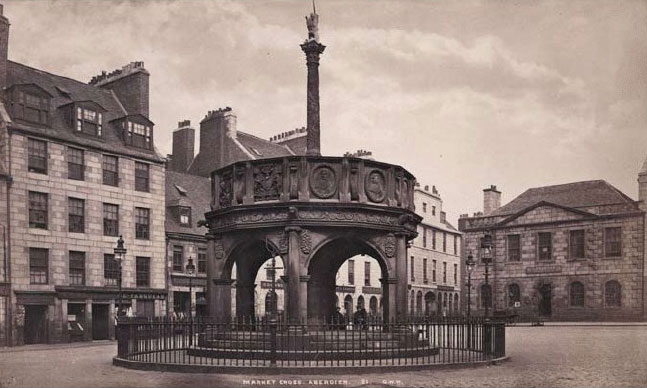- Relief printing
- Intaglio and planographic printing
- Color printing
- Bits and pieces
- Early photography in silver
- Non-silver processes
- Modern photography
- Color notes
- Color photography
- Photography in ink: relief and intaglio printing
- Photography in ink: planographic printing
- Digital processes
- Where do we go from here?
Albumen prints

Albumen print. George Washington Wilson. Marischal College, Aberdeen. c. 1875. 4 1/2 x 7 1/2" (11.4 x 19 cm). The Museum of Modern Art, New York. Gift of Richard Benson.
The wet-plate era demanded a new printing process that could do justice to the wide range of tone held in the glass negatives. The older method of printing on paper—the salted-paper method—produced images that sat directly on the paper fibers, which made them somewhat rough. They were also completely matte, which meant that they could never have strong black values; matte surfaces diffuse the light reflecting off them, preventing the high degree of light absorption that is necessary to portray a strong black value. Because of their superb scale the wet-plate negatives opened the door to a new range of tonal description in the darker values that had not been possible with the salted-paper process.

Albumen print. George Washington Wilson. Market Cross, Aberdeen. c. 1875. 4 1/2 x 7 1/2" (11.4 x 19 cm). The Museum of Modern Art, New York. Gift of Richard Benson.
The solution was albumen printing. The name comes from the fact that the image-bearing material was held onto the paper support by a relatively thick layer of albumen, the soluble protein found in egg white. This binder allowed prints to be made that carried the image not on the paper fibers but above them, in the smooth egg-white coating. Albumen also produced a beautiful semigloss surface, which could describe a very dark value if enough silver was present—and in fact the new method increased the amount of silver available in the print. The albumen coating could hold far more sensitive salt than salted-paper did and hence could produce a much heavier metallic deposit.
The combination of the wet-plate negative and the albumen print transformed positive/negative photography; once this pair of techniques spread, the daguerreotype was effectively dead. It is important to review just what changes these new processes represented. In the older salted-paper-based photography the negative was exposed dry, had a low sensitivity, and produced a rough and tonally limited image. The newer glass negative was far more sensitive, held superb detail and tone, but had to be coated and exposed just moments before being used. In printing, both the old and the new method used a sheet of paper that was exposed dry, by contact, fixed with sodium thiosulfate, and then toned with gold. A thorough wash in plain water removed any residual chemicals. In both cases the image “printed out,” so no developing was needed. The chief difference between the salted-paper and the albumen print was simply the binder used to hold the sensitive salts (and subsequently the image) onto the paper support. The use of albumen gave the prints a new surface, deeper tonality, and far more detail. In many ways albumen printing was just an improved version of the older salted-paper. The wet-plate negative, on the other hand, had been a radical innovation.

